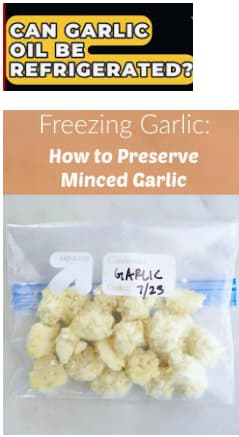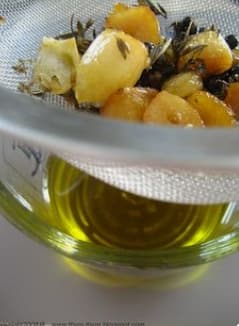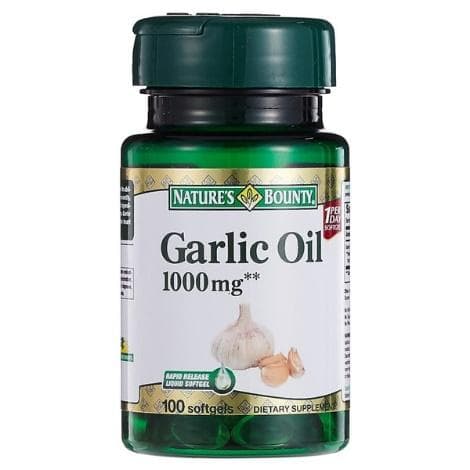Raw garlic in oil at room temperature can allow Clostridium botulinum to produce toxin. If you make garlic-in-oil at home, refrigerate immediately and finish within 4 days, or freeze in small dated portions. Never leave it on the counter.

Table of Contents
- Why this matters more after 60
- The science in plain words
- Home rules to post on the fridge
- What about store-bought garlic oils?
- “Garlic confit” and flavored oils
- Symptoms you must not ignore
- Safer flavor ideas for seniors
- Quick kitchen checklist
- FAQ
- Fast Facts
Why this matters more after 60
Recovery from foodborne illness can be tougher later in life. Botulism is rare, but when it strikes, it’s severe. One small habit change—keeping garlic-in-oil cold and short-lived—dramatically lowers risk.

The science in plain words
- Garlic is low-acid.

- Oil blocks oxygen.

- Room temperature is cozy for spores.
Put those together and you have conditions where botulism toxin can form—even if the mixture looks fine, smells fine, and tastes fine.

Home rules to post on the fridge
- No counter storage. Don’t park garlic-in-oil on the stove or the counter—ever.

- Chill fast. Refrigerate right after mixing; keep the fridge at ≤40°F (4°C).

- Use within 4 days. After that, toss or freeze.

- Freeze smart. Portion into small labeled containers; thaw only what you’ll use.

- When in doubt, throw it out. Oil and garlic are cheap; your health is not.

What about store-bought garlic oils?
Commercial products are formulated and tested for safety (often acidified and verified). Homemade mixes are not. Treat anything you prepare at home with the 4-day rule.

“Garlic confit” and flavored oils
Slow-cooked garlic immersed in oil tastes great but carries similar storage concerns. Keep it refrigerated, use it promptly, or freeze it. Don’t leave garlic confit or infused oil on the counter.

Symptoms you must not ignore
Possible botulism symptoms include blurred or double vision, drooping eyelids, slurred speech, trouble swallowing, generalized weakness, and breathing difficulty. If these appear after eating a risky food, seek urgent medical care (call 911 in the U.S.).

Safer flavor ideas for seniors
- Cook as you go. Sauté minced garlic and use it the same day; refrigerate leftovers and finish within 4 days or freeze.
- Use dried seasonings for shelf-stable zip; add fresh garlic during cooking.
- Bright vinaigrettes. Citrus-herb dressings made fresh, kept cold, and used soon deliver flavor with less risk.
Quick kitchen checklist
- Fridge thermometer reads ≤40°F (4°C)
- Labels show contents + “made on” date
- Small containers ready for freezing
- Everyone in the home knows the 4-day rule
FAQ
- Can I store garlic in oil on the counter?
No. That’s the classic botulism setup. - How long does homemade garlic-in-oil last in the fridge?
At most 4 days. Then discard or freeze. - Does refrigeration make it completely safe?
It greatly lowers risk, but time limits still apply. - Is freezing a good option?
Yes. Portion, label, and freeze for longer storage. - What if I acidify with lemon or vinegar?
Home acidification is inconsistent. Keep it cold and use fast. - Is roasted garlic or garlic confit safer?
Only if stored cold and used quickly (or frozen). Counter storage is still unsafe. - What temperature should my fridge be?
40°F (4°C) or lower. Use a thermometer to be sure. - What are early botulism signs?
Blurred vision, drooping eyelids, slurred speech, swallowing trouble, weakness—seek urgent care. - Is dried garlic in oil safe at room temp?
Treat all garlic-in-oil as risky at room temperature. Keep it cold and time-limited. - Do restaurants follow different rules?
They should follow food codes and tested procedures. At home, stick with the 4-day rule. - Power outage—keep or toss?
If your fridge rose above 40°F for several hours, discard garlic-in-oil. - Does cooking destroy the toxin?
The toxin is heat-sensitive, but relying on that is not a safe plan. Prevent by proper storage and time limits.
Fast Facts
- Homemade garlic-in-oil: refrigerate right away; use within 4 days.
- Never store at room temperature.
- Best long-term option: freeze in small, dated portions.
- Watch for vision changes, swallowing trouble, weakness; get medical help.
- Seniors: keep fridge ≤40°F and label containers.








